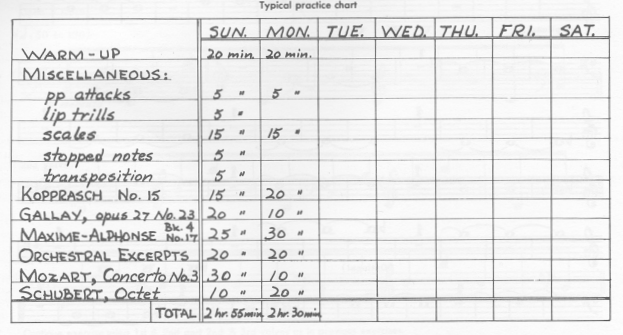
| O.J.'s Trumpet Page | Trumpet Practice |

You could easily change the text to fit your practice plan.
Farkas says the following (page 44):
"Probably the most important aspect of
practice is knowing how to practice. Before you can really know
how, you must first analyze your present abilities. Ask yourself what you
do well on your instrument, what you do badly. How is your endurance, tone,
range, staccato, legato, pp and ff? You must evaluate your own ability
fairly and impersonally to have a clear concept of what you are trying
to accomplish.
On a piece of paper, draw a chart showing
the days of the week and the number of hours available for practice each
day. Divide these hours into fractions showing all the phases of the practice
day: warm-up, special problems (trills, attacks, scales, transposition,
etc.), etudes, solos, orchestra passages. When this is done, allot the
time in varying proportions to these different sections on your chart,
as your analysis has shown your need. After having chosen suitable etudes
from the several books, diligently follow your well thoughtout plan for
the week, marking off the number of minutes worked as each section is completed.
Then, if for some reason your practice time is cut short on any day, it
is a simple matter to consult the chart, find the sections which were not
marked off and give the neglected portions their proper attention."